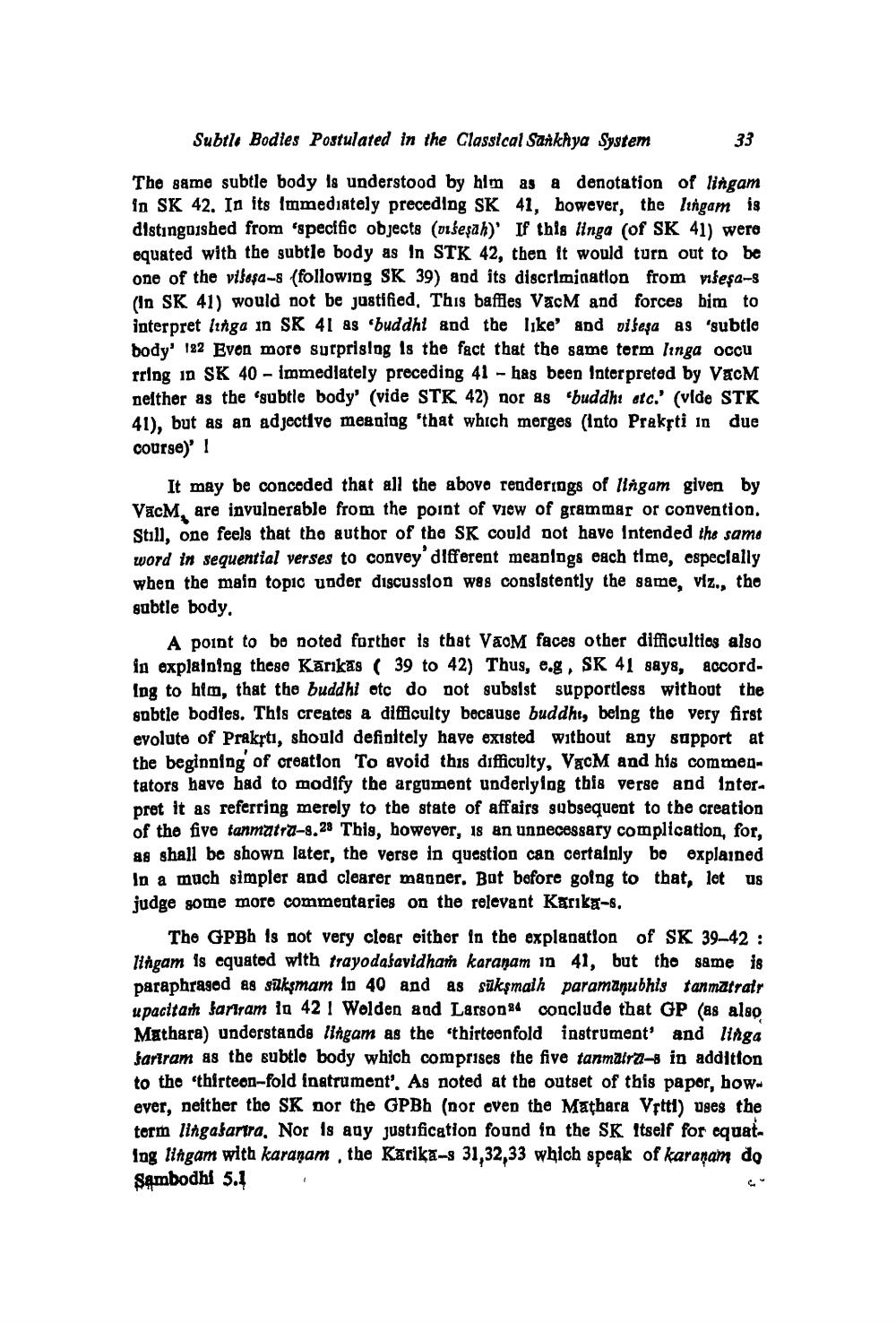________________
Subtle Bodies Postulated in the Classical SarkAya System
33
The same subtle body is understood by him as a denotation of lingam in SK 42. In its immediately preceding SK 41, however, the lingam is distinguished from 'specific objects (oršeşah)' If this linga of SK 41) were equated with the subtle body as in STK 42, then it would turn out to be one of the višesa-8 (following SK 39) aod its discrimination from višeşa- (In SK 41) would not be justified. This baffles VacM and forces him to interpret linga in SK 41 as buddht and the like' and difesa as 'subtle body' 122 Even moro surprising is the fact that the same term linga occu rring in SK 40 - immediately preceding 41 - has been Interpreted by VacM nelther as the subtle body' (vide STK 42) nor as buddhı etc.' (vide STK 41), but as an adjective meaniog that which merges (Into Prakti in due course)' I
It may be conceded that all the above renderings of lingam given by VacM, are invulnerable from the point of view of grammar or convention. Still, one feels that the author of the SK could not have intended the same word in sequential verses to convey different meanings each time, especially when the main topic under discussion was consistently the same, viz., the subtle body.
A point to be noted forthor is that Vaom faces other difficulties also in explaining these Karikas ( 39 to 42) Thus, e.g, SK 41 says, accordIng to him, that the buddhi etc do not subsist supportless without the subtle bodies. This creates a difficulty because buddht, being the very first evolute of Prakrti, should definitely have existed without any support at the beginning of creation To avoid this difficulty, Vacm and his commentators have had to modify the argument underlying this verge and interpret it as referring merely to the state of affairs subsequent to the creation of the five tanmatra-8.28 This, however, is an unnecessary complication, for, as shall be shown later, the verse in question can certainly be explained In a much simpler and clearer manner. Bot before going to that, let us judge some more commentaries on the relevant Karika-s.
The GPBh 1s not very clear either in the explanation of SK 39-42 : lingam is equated with trayodabavidhan karaṇam in 41, but the same is paraphragod as saksmam io 40 and as sūkşmalh paramanubhis tanmatrair upacitar fariram la 42 Wolden and Larson 4 conclude that GP (as also Mathara) understands lingam as the thirteenfold instrument' and linga fariram as the subtlo body which comprises the five tanmalru-in addition to the thirteen-fold inatrument'. As noted at the outset of this papor, however, neither the SK nor the GPBh (nor even the Mathara Vrtti) uses the torm lingatartra, Nor is any justification found in the SK Itself for equat. ing lingam with karanam . the Karika-5 31,32,33 which speak of karanam do Sambodhi 5.1




